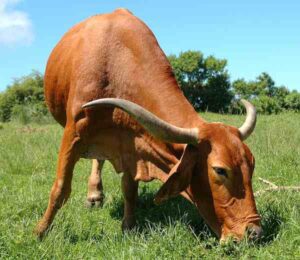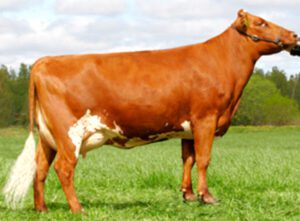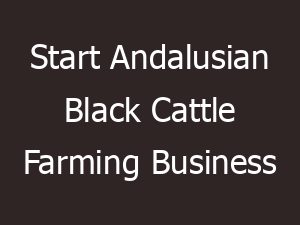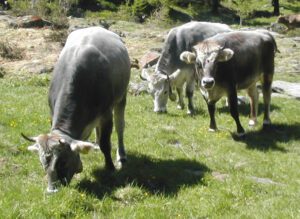The Burlina cattle are a dual purpose breed of cattle, but they are raised mainly for milk production. It is originally from the sub-alpine regions of north-east Italy. It is distributed mainly in the provinces of Treviso, Verona and Vicenza.
It is also known by some other names such Bassanese, Binda, Boccarda and Pezzata degli altipiani. Exact origins of the breed are unknown.
But it has been suggested that the breed may be related to the similar Bretonne Pie Noir breed of small pied dairy cattle in Brittany, or it may have been brought into Italy by Cimbrian migrants.
The breed was one of the most numerous cattle breeds present in north-eastern Italy in the early 20th century.
And the Burlina cattle breed was the commonest dairy cattle breed on the Altopiano di Asiago, in the Colli Berici, on Monte Grappa and in the Monti Lessini until the 1930s.
But total numbers of the breed declined significantly during the First World War, under the Fascist regime and during the Second World War. And their total numbers also gradually declined during the 1950s and 1960s.
The Burlina cattle were replaced mostly by the Friesian cattle which was more productive.
Total population of the breed was recorded as 11,283 in 1956. But their total numbers had fallen to about 300 animals by 2008.
Currently the breed is distributed to the Province of Treviso, Verona and Vicenza. Read more information about the breed below.
Burlina Cattle Characteristics
Burlina cattle are smaller sized animals with a pied black and white coat. Both bulls and cows usually have small horns. Average height of the bulls is around 125 cm and about 120 cm for the cows.
The mature Burlina cows on average weight around 400 kg. And average live body weight of the mature bulls is around 450 kg. Photo from Kranky Kids and info from Wikipedia.
Uses
The Burlina cattle are a dual purpose animal. But today they are raised mainly as a dairy breed for milk production.
Special Notes
Burlina cattle are very hardy, rugged and resistant to diseases. They are good grazers and have excellent grazing capabilities. They are well adapted to poor or marginal mountain regions.
Because of their well resistance to diseases there is less need for the use of antibiotics which allows them for the production of good quality milk. The breed is also well known for it’s resistance to tuberculosis.
The cows are very good milk producers. And their milk has a special grass flavor.
Milk from the Burlina cow is notably used in the production of the regional Morlacco cheese which, like the Burlina breed itself, is included in the Ark of Taste catalogue.
These animals are also pretty good for meat production. However, review full breed profile of the Burlina cattle in the chart below.
| Breed Name | Burlina | |
| Other Name | Bassanese, Binda, Boccarda and Pezzata degli altipiani | |
| Breed Purpose | Mainly milk, also meat | |
| Special Notes | Strong, well adapted to local climates, good for milk, resistant to diseases, resistant to tuberculosis | |
| Breed Size | Small | |
| Bulls | Around 450 kg | |
| Cows | Around 400 kg | |
| Climate Tolerance | Native climates | |
| Coat Color | Pied black and white | |
| Horned | Yes | |
| Milk Yield | Good | |
| Rarity | Critical-maintained | |
| Country/Place of Origin | Italy |






